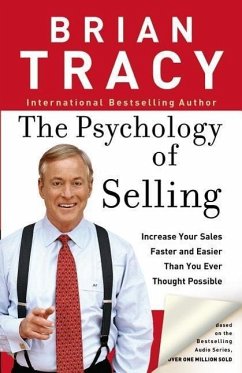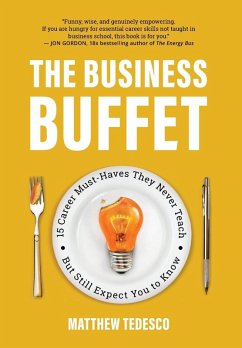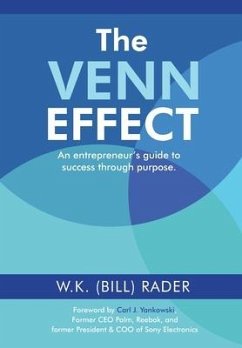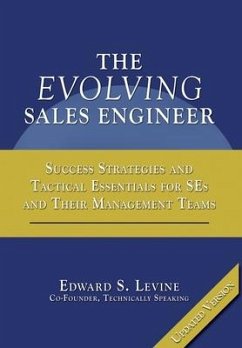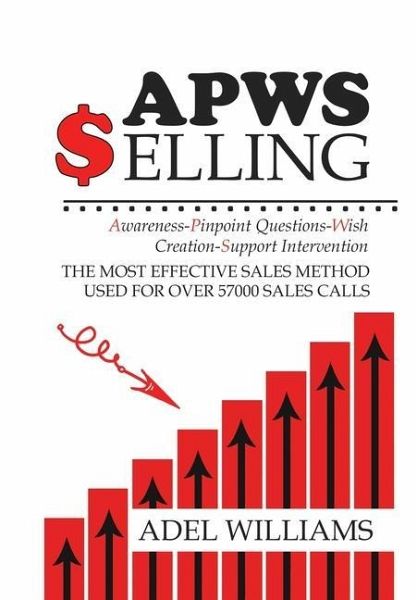
APWS Selling, The Most Effective Sales Method Used for Over 57,000 Sales Calls
A Comprehensive, Step-By-Step Method for Achieving Sales Success in Simple and Complex Sales in Most Industries
Versandkostenfrei!
Versandfertig in über 4 Wochen
36,99 €
inkl. MwSt.

PAYBACK Punkte
18 °P sammeln!
The biggest challenge facing sales professionals on a daily basis is selling to customers who are using a direct competitor’s product(s). So how do you compel your customers to choose your products over your competitor’s products? Whether it’s a case of a simple sale or a product that’s part of a complex sales cycle, getting customers to purchase your product can be a big challenge because customers often consider change to be risky. Most of the problems arise when the existing product in use lacks a meaningful value, which results in an ongoing existing problem in the customer’s pra...
The biggest challenge facing sales professionals on a daily basis is selling to customers who are using a direct competitor’s product(s). So how do you compel your customers to choose your products over your competitor’s products? Whether it’s a case of a simple sale or a product that’s part of a complex sales cycle, getting customers to purchase your product can be a big challenge because customers often consider change to be risky. Most of the problems arise when the existing product in use lacks a meaningful value, which results in an ongoing existing problem in the customer’s practice or facility. In APWS selling, this is called an existing product-outcome/value gap. So, how can you get your customer to pay attention to this gap? And how should you, the sales rep, fill in the gaps? When inferior products necessitate ‘workarounds’ that the staff have to learn and implement to make for a product’ shortcomings, it can be surprisingly difficult to get staff to accept a superior product that doesn’t require the ‘workarounds’ that staff have grown accustomed to. People sometimes develop bonds with products and processes despite the problems that come with those products. It’s human nature. A bond between the customer and the existing product (ongoing problem) forms, and this is what I refer to as a customer : problem bond. Other challenges then arise, including the task of breaking the bond between the customer and the existing product in use. After that is resolved, you will need to create a new bond between your product(s) and the customer. When customers use inferior products that create their own undesirable secondary consequences, most customers don’t realize how significantly those adverse costs and risks add up if left unresolved over the course of weeks, months and even years. In some cases, left unresolved, these consequences can result in severe harm and unnecessary expense. How can the sales professional identify the existing problems which have gone unnoticed by the customer? How do you create a customer’s wish to have your product solution and then ask for your product? How can you get your customer to pay attention to the current ongoing damage? Does merely presenting a product’s features and benefits work anymore? Are we really selling outcomes? Do customers view the sales professional as a resource partner? How should you use tactical empathy to build chemistry and rapport? How should you grab your customers’ attention and prepare them to engage in your sales call? How do you make your solution stand out? How do you pose expert, specific questions and prepare your customers to focus and ask for your proposed solution? How do you deal with the most difficult personality types and behaviors in any sales situation? How should you prepare for a product demo and trial which are essential to success in the sales process? What is the most important skill set when sales managers evaluate their sales team’s performance? Now you can find answers to all these questions with the APWS method. Sales success is a result of many elements coming together. This group of elements represents a chain that includes leadership skills, earning your customer’s confidence by establishing a history of multiple effective encounters and events with your customer, identifying customer issues and challenges and offering ways to resolve them, excellent presentation and professional selling skills, and effective communication skills. You will have an effective method for dealing with every sort of sales situation, from the simplest to the most challenging, and it applies to both simple and complex sales. You will know how to sell to customers presently using a competitor’s product or who are looking to implement a totally new solution.



